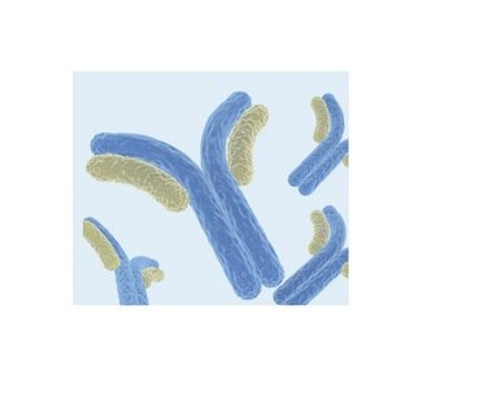Product Description
Recombinant Human Transcription factor E2F6 (E2F6) is available at Gentaur for Next week Delivery.
Gene Name: E2F6
Alternative Names :
Expression Region : 1-281aa
AA Sequence : MSQQRPARKLPSLLLDPTEETVRRRCRDPINVEGLLPSKIRINLEDNVQYVSMRKALKVKRPRFDVSLVYLTRKFMDLVRSAPGGILDLNKVATKLGVRKRRVYDITNVLDGIDLVEKKSKNHIRWIGSDLSNFGAVPQQKKLQEELSDLSAMEDALDELIKDCAQQLFELTDDKENERLAYVTYQDIHSIQAFHEQIVIAVKAPAETRLDVPAPREDSITVHIRSTNGPIDVYLCEVEQGQTSNKRSEGVGTSSSESTHPEGPEEEENPQQSEELLEVSN
Sequence Info : Full Length
Tag Info : N-terminal GST-tagged
Theoretical MW : 58.8 kDa
Storage Buffer : Tris/PBS-based buffer, 5%-50% glycerol. If the delivery form is lyophilized powder, the buffer before lyophilization is Tris/PBS-based buffer, 6% Trehalose, pH 8.0.
Endotoxin Level : Not tested-
Biological Activity : Not tested
Storage : Short term: -20°C; Long term: -80°C. Minimize freeze and thaw cycles.
Research Area : Epigenetics and Nuclear Signaling
Restriction : For Research Use Only. Not for use in diagnostic procedures, drug use, or for administration to humans or animals.
Relevance : Inhibitor of E2F-dependent transcription. Binds DNA cooperatively with DP proteins through the E2 recognition site, 5'-TTTC[CG]CGC-3'. Has a preference for the 5'-TTTCCCGC-3' E2F recognition site. E2F6 lacks the transcriptional activation and pocket protein binding domains. Appears to regulate a subset of E2F-dependent genes whose products are required for entry into the cell cycle but not for normal cell cycle progression. May silence expression via the recruitment of a chromatin remodeling complex containing histone H3-K9 methyltransferase activity. Overexpression delays the exit of cells from the S-phase.
Function : Inhibitor of E2F-dependent transcription. Binds DNA cooperatively with DP proteins through the E2 recognition site, 5'-TTTC[CG]CGC-3'. Has a preference for the 5'-TTTCCCGC-3' E2F recognition site. E2F6 lacks the transcriptional activation and pocket protein binding domains. Appears to regulate a subset of E2F-dependent genes whose products are required for entry into the cell cycle but not for normal cell cycle progression. May silence expression via the recruitment of a chromatin remodeling complex containing histone H3-K9 methyltransferase activity. Overexpression delays the exit of cells from the S-phase.
Involvement in disease :
Subcellular location : Nucleus
Protein Families : E2F/DP family
Tissue Specificity : Expressed in all tissues examined. Highest levels in placenta, skeletal muscle, heart, ovary, kidney, small intestine and spleen.
Paythway :
Uniprot ID : O75461
 Euro
Euro
 British Pound
British Pound
 US Dollar
US Dollar








